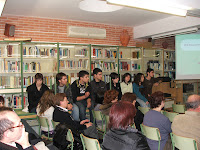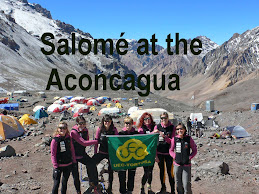For some reason our blog has got stuck. Before you could see all the posts in one long list. Now you can only see the first one, why this has happened I have no idea. If you want to see the other posts on the blog please use the menu on the right hand side to navigate around the blog or the list at the bottom of this post.
YEAD on the radio
We were invited to appear on the local radio station again. Antena Caro is our local radio and we have been on it before, you can hear both interviews by visiting our section on publicity here.
The interview is, of course, in Catalan, but at least you get the chance to practise your Catalan a little and to see Abraham, Norbert, Salomé and Huw in the video of the interview.
Catalans in the Kitchen
We have also completed our work on the Comenius day and all the cooking that was done. One of our groups totally failed to record their hard work, there was some sort of technical problem with the camera and neither the photos or the video survived, but the other two groups have now posted pictures and video of their efforts. Of course you can also look at what we the teachers did too.
Ten famous Catalans
We have made our choice of the ten famous Catalans that we think people ought to know about. They are a curious mixture of people who are still alive and figures from the past. Some people wanted to include Leo Messi, but he is of course from Argentina even though he plays for Barcelona FC. If you want to see our list please go here.
Painting our logo

A group of students at our school are currently involved in painting the logo of our project on one of the school's walls. It isn't finished yet but is looking good, if you want to see how it is going click here.
Blog Homepage
The teachers
You Tube Channel
Pen pal network participants
An introduction to us, Catalans or Spanish
Where we live, location
The Catalan national Anthem
The Catalan and Spanish coats of arms
Catalan demographics
Spanish demographics
Catalunya's National day
The Catalan flag
Comenius day
Exchange boxes
The word bank
Personal blogs
Video presentation of our school
Festivals and Traditions
Catalans in the kitchen, comenius day
Ten famous Catalans
Painting our logo

 Our school is in Roquetes in Spain
Our school is in Roquetes in Spain









































.jpg)




